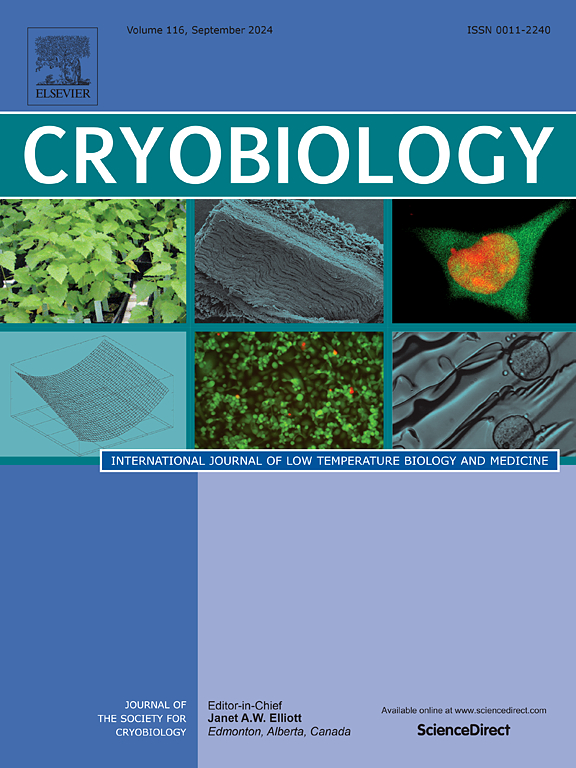Cryopreservation of spermatogonia of the giant freshwater prawn, Macrobrachium rosenbergii, using slow and ultra-rapid freezing
IF 2.1
3区 生物学
Q2 BIOLOGY
引用次数: 0
Abstract
The giant freshwater prawn, Macrobrachium rosenbergii, is an important species that is widely raised in tropical and subtropical regions. To develop techniques for preserving valuable traits in this species, we have devised protocols for cryopreserving spermatogonia—progenitor cells that give rise to spermatozoa through spermatogenesis—using slow freezing and ultra-rapid freezing techniques. Optimization of cryoprotectants and their concentrations revealed that 10 % dimethyl sulfoxide (ME2SO) is effective as a cryoprotectant in both methods. The optimal time for equilibration to the cryoprotectant before slow freezing was determined to be 15 min. Thawing temperature had a significant effect on cell recovery and viability, both being markedly higher when cells were thawed at 10 °C than at 27 °C. After long-term storage in liquid nitrogen, cells preserved by ultra-rapid freezing exhibited higher recovery and viability rates than those preserved using the slow freezing method, with recovery rates of up to 86.4 % ± 5.9 % at 6 months. Therefore, using 10 % ME2SO with the ultra-rapid freezing method is recommended as the optimal protocol for long-term cryopreservation of M. rosenbergii spermatogonia.
罗氏沼虾精原体的慢速和超高速冷冻保存
罗氏沼虾(Macrobrachium rosenbergii)是热带和亚热带地区广泛养殖的重要物种。为了开发保存该物种有价值性状的技术,我们设计了使用慢速冷冻和超高速冷冻技术冷冻保存精原细胞(通过精子发生产生精子的祖细胞)的方案。低温保护剂及其浓度的优化表明,10%的二甲亚砜(ME2SO)作为低温保护剂在两种方法中都是有效的。慢速冷冻前与冷冻保护剂平衡的最佳时间为15分钟。解冻温度对细胞的恢复和活力有显著影响,10°C解冻时细胞的恢复和活力都明显高于27°C。在液氮中长期保存后,超高速冷冻保存的细胞比慢速冷冻保存的细胞具有更高的恢复率和活力,6个月时的恢复率高达86.4%±5.9%。因此,建议采用10% ME2SO超快速冷冻法作为长期冷冻保存罗氏m.r obergii精原细胞的最佳方案。
本文章由计算机程序翻译,如有差异,请以英文原文为准。
求助全文
约1分钟内获得全文
求助全文
来源期刊

Cryobiology
生物-生理学
CiteScore
5.40
自引率
7.40%
发文量
71
审稿时长
56 days
期刊介绍:
Cryobiology: International Journal of Low Temperature Biology and Medicine publishes research articles on all aspects of low temperature biology and medicine.
Research Areas include:
• Cryoprotective additives and their pharmacological actions
• Cryosurgery
• Freeze-drying
• Freezing
• Frost hardiness in plants
• Hibernation
• Hypothermia
• Medical applications of reduced temperature
• Perfusion of organs
• All pertinent methodologies
Cryobiology is the official journal of the Society for Cryobiology.
 求助内容:
求助内容: 应助结果提醒方式:
应助结果提醒方式:


